How to plant almonds in the garden: methods and rules
Almond belongs to the Plum family. It is often called a nut, but in biological terms it is a stone fruit, a close relative of apricot, the seeds of which are also edible. Native to the Middle East and South Asia, almonds are thermophilic.
Many varieties of almonds can be cultivated only in regions where winter weather is characterized by a short-term drop in temperature to 17-22 degrees, but frosts of 25 degrees and above can destroy flower buds.
Content:
- Characteristics of almonds
- Garden varieties of almond tree
- How to grow a tree from a seed
- Rules for planting seedlings
- Proper care of the almond tree
- Disease and pest control
Characteristics of almonds and their varieties
By structure almond is a shrub or small tree with developed roots. The aboveground part of the plant can grow up to 11 meters, and the underground part can go deeper by five meters. The crown can have a rounded, pyramidal, spreading shape, and sometimes it looks like a weeping willow.
During flowering, the almond tree is densely covered with white or pinkish flowers, in some varieties the petals are painted bright pink and bordered with a white stripe.
Each flower is represented by five petals surrounding numerous pistil stamens. Almond blossom occurs in mid-spring and is ahead of leafing. Flowering trees are endowed with a pronounced pleasant aroma, for which they are valued as early honey plants, capable of producing up to 38 kg of honey per hectare. The green leaves are elongated and resemble the leaves of an olive tree, but are larger. Almost all varieties require pollinators to harvest, so several trees should be planted on the site.
Unlike apricots and drain, the pulp surrounding the pit is a rough green pubescent skin and is not edible. The darkening and cracking of this rind signals the maturity of the edible pits, which are elongated and covered with depressions and grooves. But the inner part of the seeds is not edible in all varieties. Wild almonds have a bitter taste and contain toxic substances. From such seeds, valuable almond oil and milk are obtained, which are actively used in cosmetology.
The collection of sweet almond "nuts" occurs at the end of summer - beginning of autumn, when the pericarp cracks. They are removed from the fruit and dried, after which they are tightly packed and sent for storage in a dry place. Almond trees begin to bear fruit in the third or fourth year of life and yield a harvest for 40-50 years, and the tree itself can live up to 85 years. The nutritional value of the almond kernel is equal to that of bread, milk and meat. "Nuts" contain 55-63% fatty oils, 23-35% proteins, up to 8% sugars, as well as B vitamins. Almonds can be stored for a long time without losing their qualities, and almond oil does not burn at all.
Garden varieties of almond tree
To obtain a crop of edible nuts, common almonds and its varietal varieties are cultivated.The choice of a variety is influenced by the climatic conditions of the region and the possibility of self-pollination, which is inherent in very few varieties, for example, Nikitsky 62.
Also, varietal characteristics affect the shape and size of trees, as well as their resistance to cold, diseases and harmful insects. The size of the seeds, the thickness of the pericarp and the amount of the crop depend on the variety.
Frost resistant almond varieties:
- Primorsky - has good immunity to diseases, needs pollinators and is capable of producing up to 15 kg of "nuts" from one tree.
- Nikitsky 62 - is capable of self-pollination and gives up to 13 kg of yield.
- Dessert - blooms in mid-spring and needs pollinators.
Varieties with medium frost resistance:
- Milos - has an average immunity to diseases and gives about six kilograms of "nuts".
- Alushta - ripens early and gives large nuts, but needs pollinators.
- Steppe - has an average yield and good taste.
Varieties of thermophilic and drought-resistant minadal:
- Jubilee - late ripening, with a yield above average
- Sevastopol - late ripening with high yields, needs pollinators.
- Foros is a medium-ripe large-fruited variety, resistant to pests and diseases, and needs pollinators.
Almond trees feel good in a lighted place, they do not put forward special requirements for the soil, they like liming, they tolerate urban conditions and grow very quickly.
How to grow a tree from a seed
Almond trees can be propagated in several ways: seeds, seedlings, layering and cuttings. The first method is the most laborious, but it allows you to feel the whole process. When growing an almond tree from a stone, it should be remembered that the culture does not always preserve the varietal quality of the fruit.
The place for planting seeds should be protected from strong winds, the soil needs fertile and well-drained. In dry climates, irrigation will be required:
- sowing seeds is carried out in the spring, with autumn planting, the risk of destruction of seeds by rodents increases
- the earth should be dug deep or plowed
- the bones are deepened by 11-16 cm
Before planting, the seed must be stratify... To do this, the bones are placed in sand and kept for about a month, maintaining the temperature at a level of 1 to 10 degrees. The best time for this event is the first half of winter. But it must be carried out 20-25 days before sowing. If the roots of the seeds have sprouted strongly, then they should be pinched to stimulate the development of lateral roots. When the seedlings reach 15 cm, they root system should be shortened with a sharp shovel. Then the plants are watered abundantly.
About six nuts are stirred on one meter, and if a permanent place is chosen and budding is carried out without subsequent transplantation, then two nuts must be placed in one hole.
Budding is carried out at the end of summer to prevent premature ocelli germination.
The procedure is performed near the root collar. For the winter, the ookulated seedlings are huddled, which helps to avoid early germination of the death of the plant from the cold. When the eyepiece grows 12-15 cm, it is earthed up to fix it. As the oculant grows, the procedure is repeated, and the stock itself is freed from new shoots. In the first year, the shape of the crown is not formed. Young trees are dug up and transplanted to a permanent place, if necessary.
Rules for planting seedlings
The most common propagation method for almonds is to plant grafted seedlings. But you should purchase planting material from a trusted seller or in a nursery in order to get a tree of the desired variety.
It is also worth considering that most varieties require pollinators, so several different varieties should be planted.
Planting seedlings is carried out according to a certain scheme, observing simple rules:
- Prepare planting holes, the size of which should be twice the root. A drainage layer is laid at the bottom using crushed stone, broken brick and sand.
- Pits are dug at intervals of at least three meters so that future plants do not interfere with each other's development.
- The soil for planting seedlings should be fertilized using superphosphate (about 500 grams per tree), ripe manure (4-5 kg), and add lime.
- The roots are evenly distributed along the bottom of the planting pit and a support is installed in the center.
- A place vaccinations should not be immersed in soil.
- After planting, each seedling should be well saturated with water. As it grows, promptly clear the soil around the trees from weeds and loosen.
In the first year of life, seedlings will grow slowly, because the plant directs all its forces to the development of the root system. But in subsequent years, almonds will actively start growing and in four years will delight them with their first flowering.
Proper care of the almond tree
Almonds require special care immediately after planting, but in subsequent years they will need regular watering, timely pruning and fertilization:
- In the absence of precipitation, you need to water the trees at least once a week. Older individuals are able to do with more rare irrigation. It is necessary to ensure that the root collar does not get wet, because it can quickly rot and the plant will die. It is reasonable to irrigate with drip irrigation, which will save you from many problems.
- Almonds need to be fed regularly. During the period of active growth, fertilizers enriched with nitrogen and potassium are applied under young trees. For adult trees, manure and ammonium nitrate in the form of solutions are suitable (per bucket of water - a kilogram of manure and 0.2 kg of nitrate). At the beginning of spring, copper-containing fertilizers are applied once. Any fertilizer must be poured with water to avoid burns to the plant and to ensure uniform distribution of dressings.
- It is necessary to conduct formative and wellness trimming almonds. They are carried out after flowering. First you need to thin out the crown and remove damaged and dried branches.
- Also, grafted almonds need shelter for the winter to avoid freezing of the culture.
In the fourth or fifth buzz of life, almond trees give their first harvest. After flowering, medium-sized, hard fruits are formed, sour in taste. In some countries, they are used for food. As they mature, the fruits begin to harden, turn dark and crack. Drying of the shell serves as a signal for the collection of "nuts".
Disease and pest control
Like all plants almond can get sick and be attacked by insects. The plant is most susceptible to gray rot, rust, moniliosis, cercosporosis and clasteriosis. All these diseases, including scab and orange spot, are fungal, so they need to be treated fungicides... Treatments are carried out twice a week.
As a preventive measure, almonds are treated with a 1% solution of Bordeaux liquid, and fallen leaves are also destroyed by burning.
Almond trees can be affected aphids, leaf rollers, plum moth, almond leaf sawfly and samoyeds, as well as spider mites. In addition to the latter, systemic insecticides are used against all insects, and spider mites are expelled with acaricidal preparations. Trees are processed in the spring, several times before flowering. As a preventive measure, they lure the natural enemies of insects - birds, by installing feeders in the garden. You should also burn the fallen leaves and dig up the soil for the winter.
If you follow all the rules, you can grow a healthy fruiting almond tree and feast on healthy and tasty nuts, which are very nutritious, but allergenic and not recommended for overweight people. And wild almonds can be used as a rootstock for peach and apricot, which increases the drought tolerance of these crops.
More information can be found in the video:




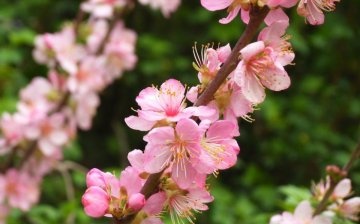
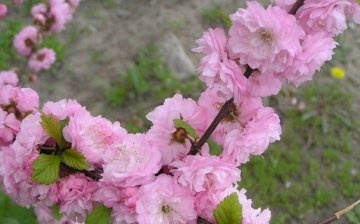
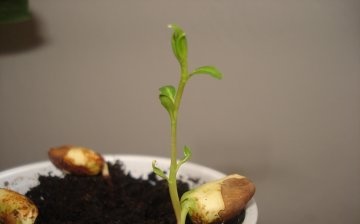
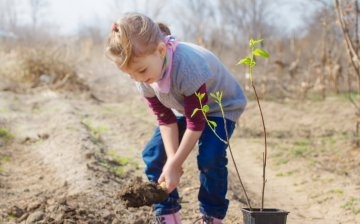
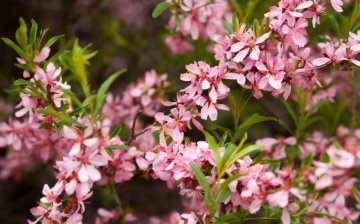
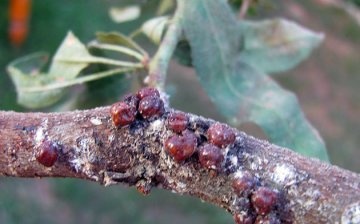







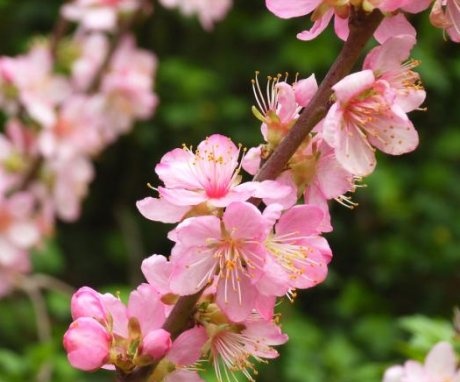
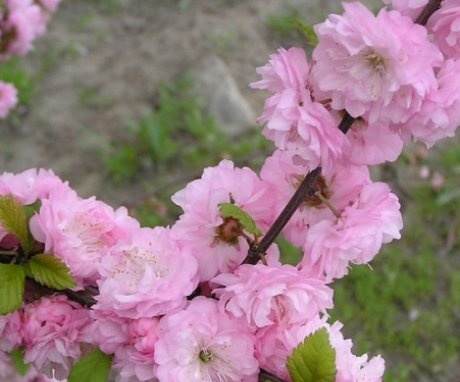
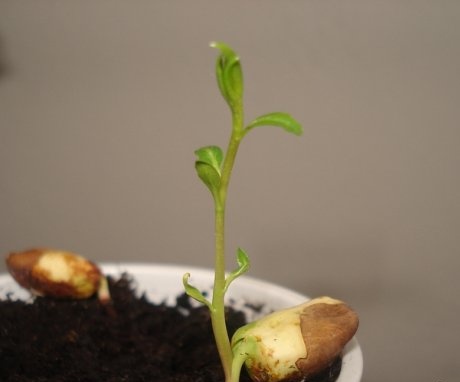

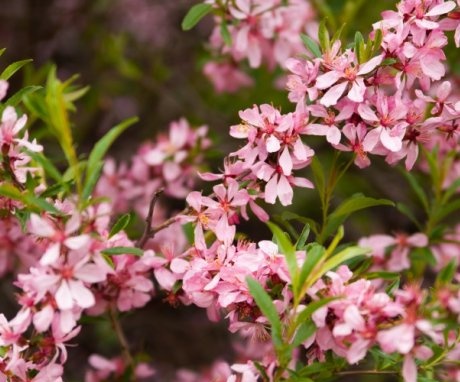

I planted almonds last year, or rather almond seeds. Before starting planting, it is advisable to keep the bones in the freezer for more than five days (I kept it for 8), after wrapping them in a damp cloth. Otherwise, I agree with the information in the article.